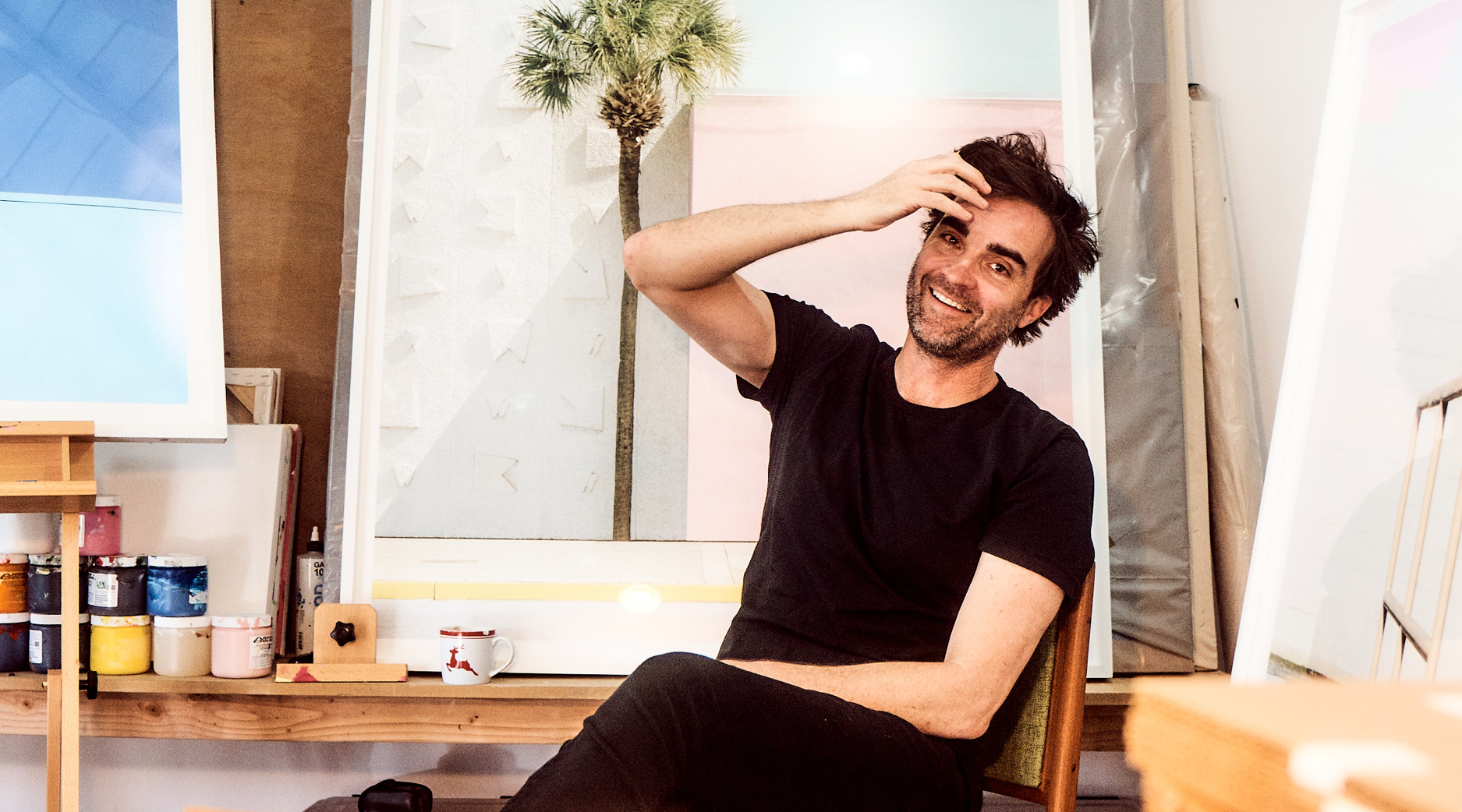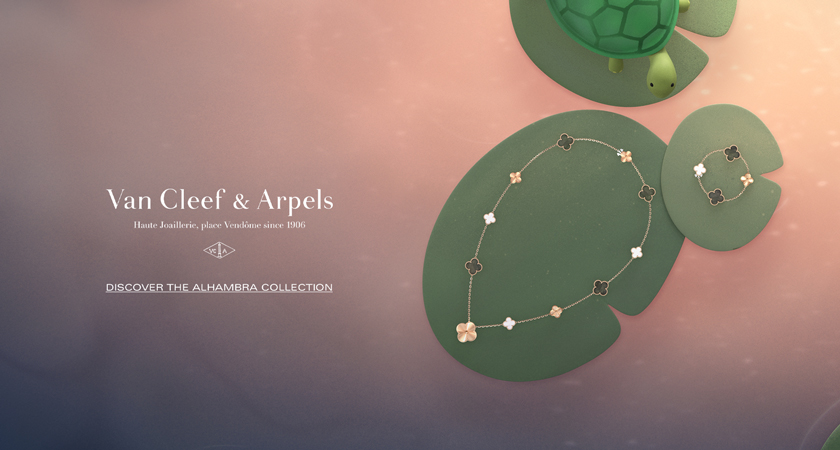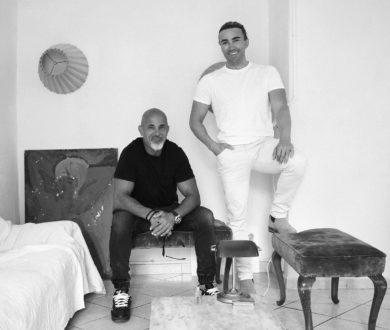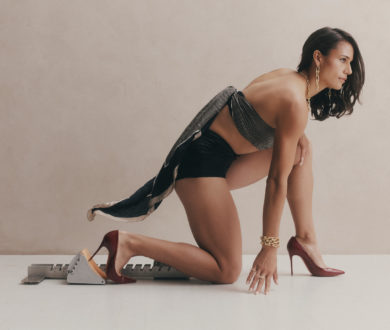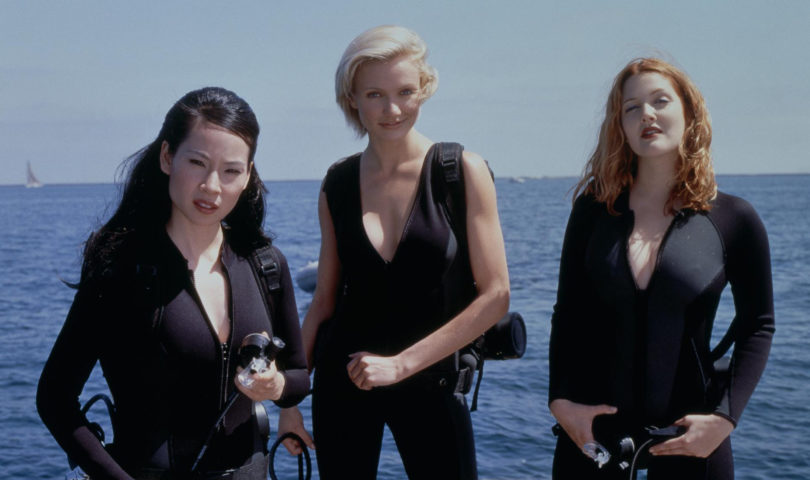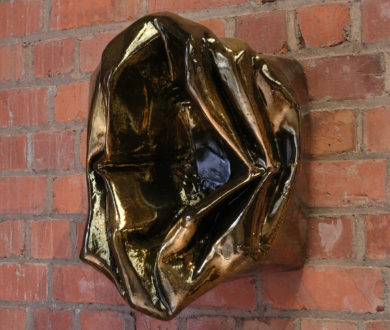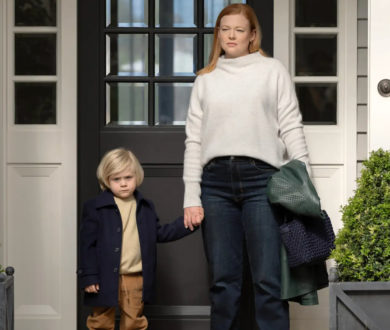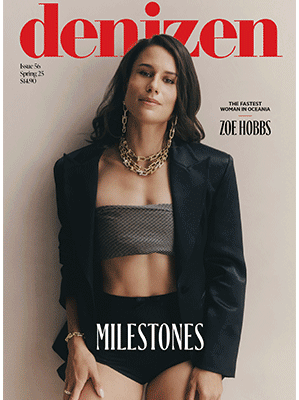Known for his work that sits at the intersection of realism and abstraction, George Byrne is a multi-faceted artist with a lifelong connection to creating. From a suburban Australian upbringing to years spent on the road as a musician, to now, living in LA as a full-time artist, Byrne has developed a distinct style that draws on the rich tapestry of his life, infusing urban photography with constructed abstraction. Here, he reflects on his craft, career, and the next chapter in his creative evolution.
George Byrne is not an artist who stumbled into his métier by accident. His path — winding and, at times, unruly — has always been fuelled by a deep curiosity and innate sensitivity to art, shaping both his work and the broader trajectory of his life. Raised in suburban Sydney in the 1980s, with Emmy-nominated actress Rose Byrne as a sister, the artist recalls a wonderfully free-range upbringing, marked by the vivid chaos of a big family and a natural pull toward creativity. “I think from a young age I was quite sensitive to music, atmosphere, and aesthetics,” he reflects. “I didn’t have the language for it at the time, but I was always noticing things — colours, moods, light. That stuff stuck.”
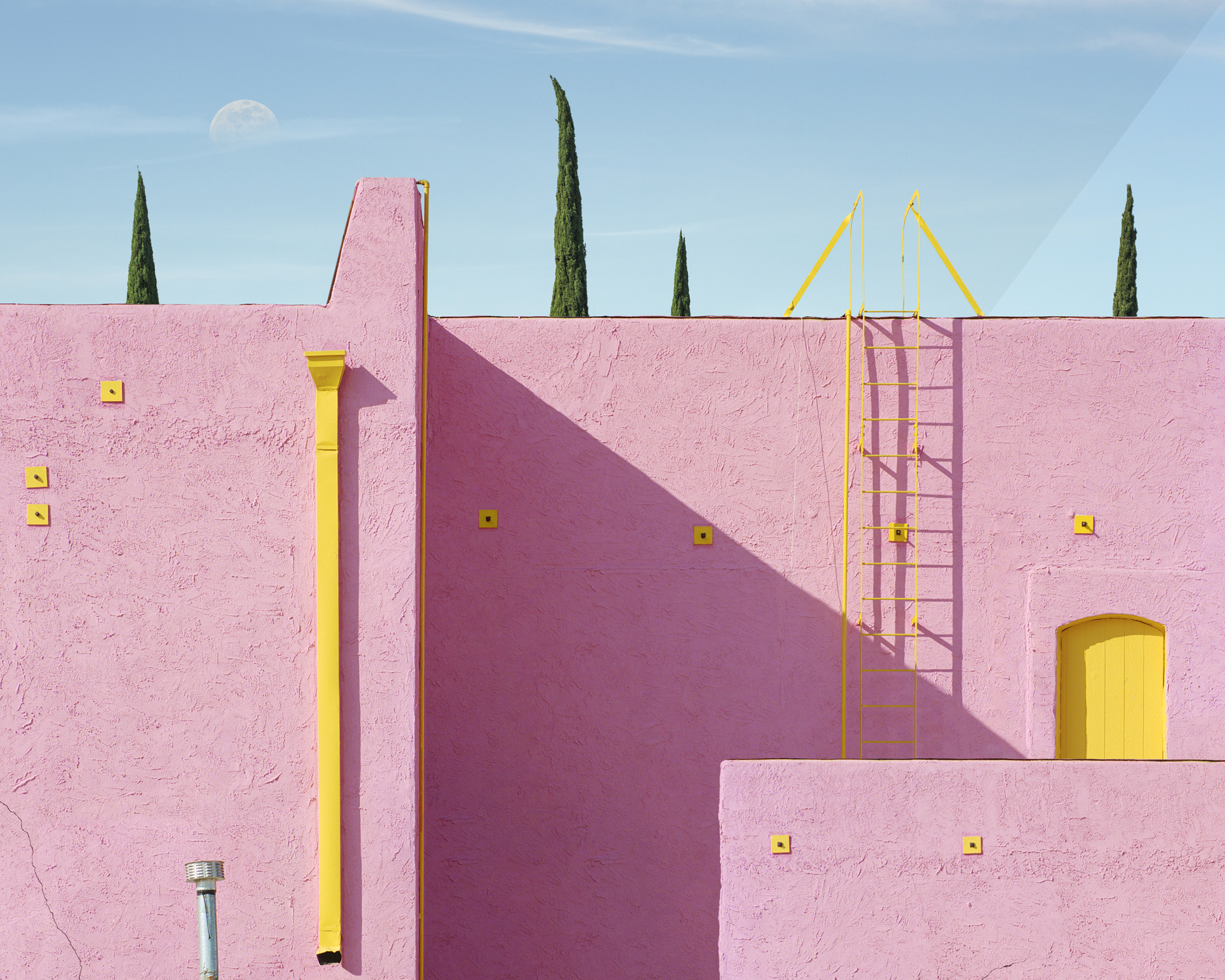
It was music that first moved him, inciting that visceral, full-body recognition of beauty. “One of the first pieces of music I recall being hit by was the chorus of the Beatles song Penny Lane,” Byrne recalls. “I must have been seven or eight… I felt it in my body and thought, wow that feels good.” Music was his first love, with photography arriving later, and much more stealthily. “I was always fascinated by composition and structure. In music, I was drawn to layering, mood, and space,” he says. By his late teens, this fascination shifted to visual arts. “I started taking photos seriously in my late teens and immediately felt a kind of intuitive pull. There was something about framing the world that made sense to me. It was quiet, solitary, and a bit mysterious.”
This connection to photography only intensified in his early twenties. Despite early forays into drawing and painting, it was photography that beckoned with its unique duality — the power to both document and distort reality. “On one hand, it’s this objective medium, capturing what’s in front of you, but on the other, it can be incredibly abstract and interpretive.” After an early solo exhibition at 21, built from photographs taken on a trip to India and drawing on inspiration found at a Grant Mudford and Wim Wenders exhibition at the MCA in Sydney, where Byrne realised photography’s potential to live in a gallery context and still carry poetic and conceptual weight, he seemed destined to make a name in visual arts. But then, life pulled him in a different direction.
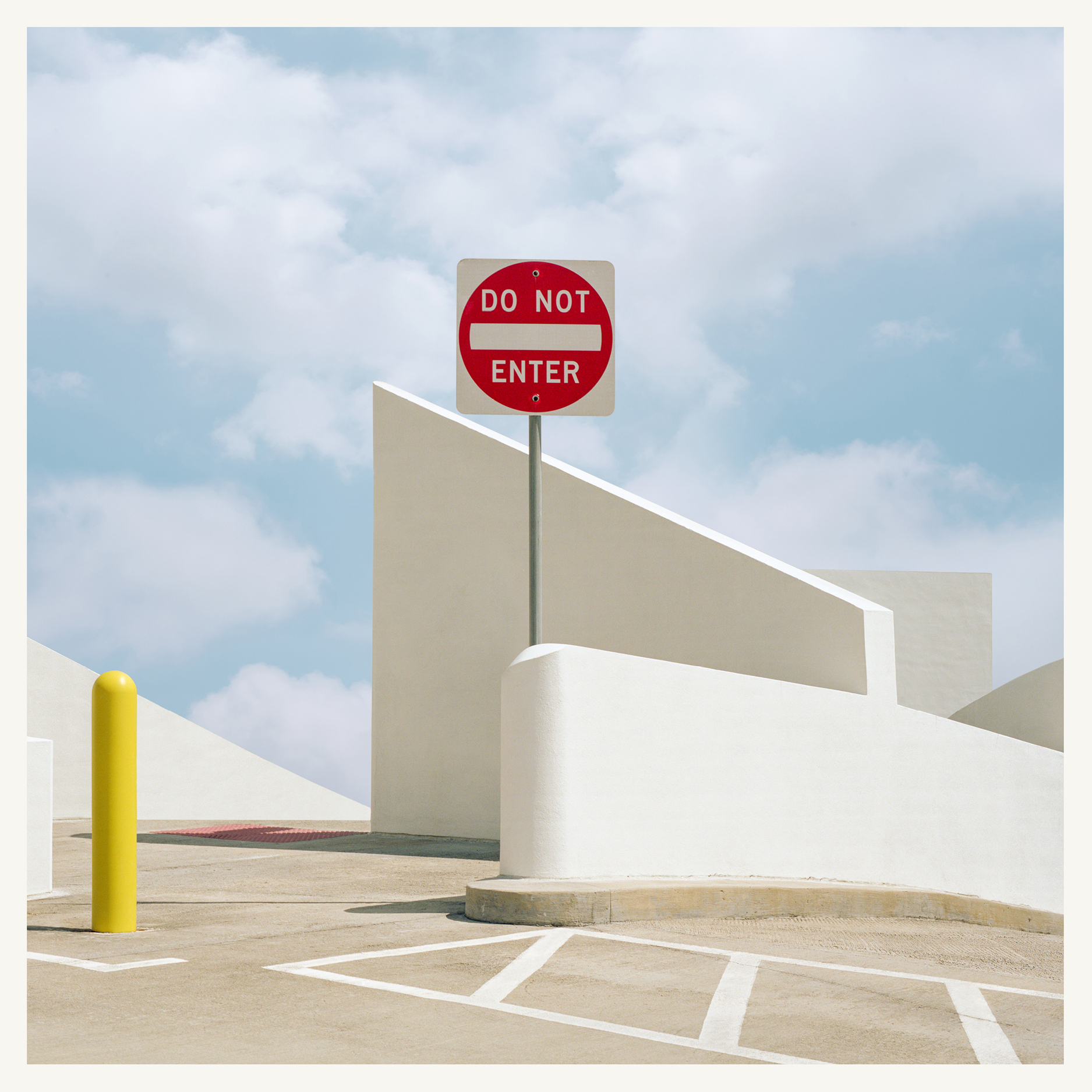
“I poured about ten years into [music] — made records, toured, lived that life — and while it was incredible in parts, I never quite got where I wanted to get to,” he shares. Burned out and seeking change, Byrne moved to Los Angeles. “I was still broke, but I was genuinely happy,” he says of those early days, working odd jobs, making stock music, and taking photographs on instinct. The camera, once again, became a means of processing the world. “I was seeing fragments of beauty everywhere: colours, structures, weird details in the LA light.”
It was through Instagram that Byrne’s work found an audience, an early show following soon after and solidifying his return to visual arts. “From there, I focused everything on developing a visual language. Shooting on film, scanning, editing, constructing scenes from multiple sources… It became more like building paintings than taking photos, part documentary, part invention. I drew on my music background a lot, thinking in terms of albums and series, rhythm and tone. That structure gave me clarity, and I just ran with it.”
“I think I’ve always had a bit of a tension between inner restlessness and a desire for stillness. The work is a way to settle things, to slow the world down.”
Today, Byrne’s photographs sit at the midpoint of realism and abstraction — a blending of real urban elements and constructed compositions that feel both tangible and dreamlike. “Place is central,” he says, speaking of how location, especially Los Angeles, continues to shape his work. “But it’s always filtered through my perception… I collect fragments from all these places and rebuild them into new compositions.”
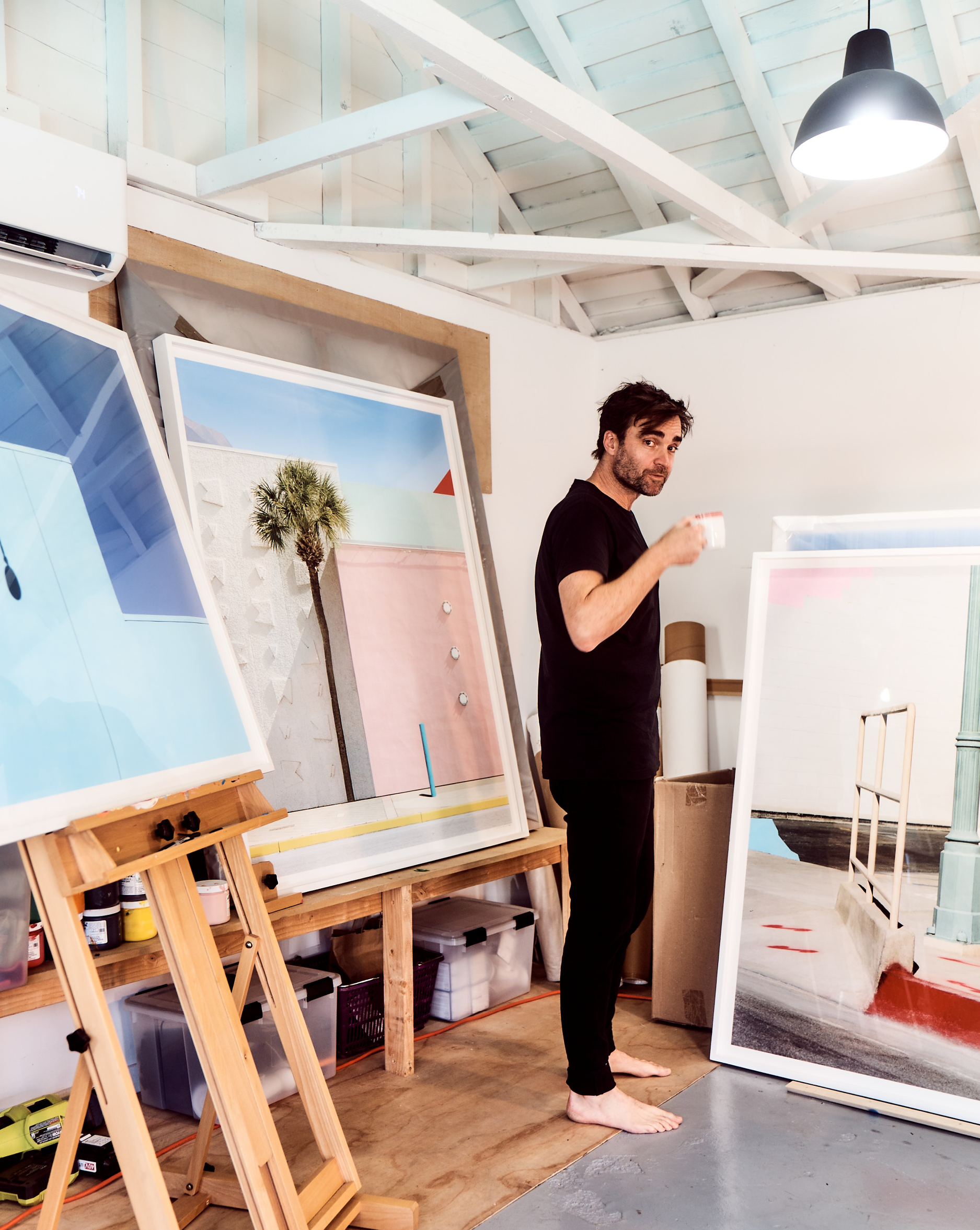
As an Australian in America, he possesses a unique perspective which lends itself to his style, “Growing up in Australia, I had a romanticised view of America, especially California. Then you get here and it’s grittier, stranger, more layered.” Being from outside of America, he tells me, has definitely sharpened his sense of observation. “I think I still carry a kind of outsider’s gaze. I notice things that locals might not, which is evident in my work.”
There is a meditative slowness to Byrne’s art — a deliberate quietness amidst the urban sprawl. “I think I’ve always had a bit of a tension between inner restlessness and a desire for stillness. The work is a way to settle things, to slow the world down,” he explains. His process is intuitive, guided less by strict intention and more by instinct. “I shoot instinctively, sometimes hundreds of images in a day, then months of nothing… Then in the studio, I start sorting, matching, and building.”
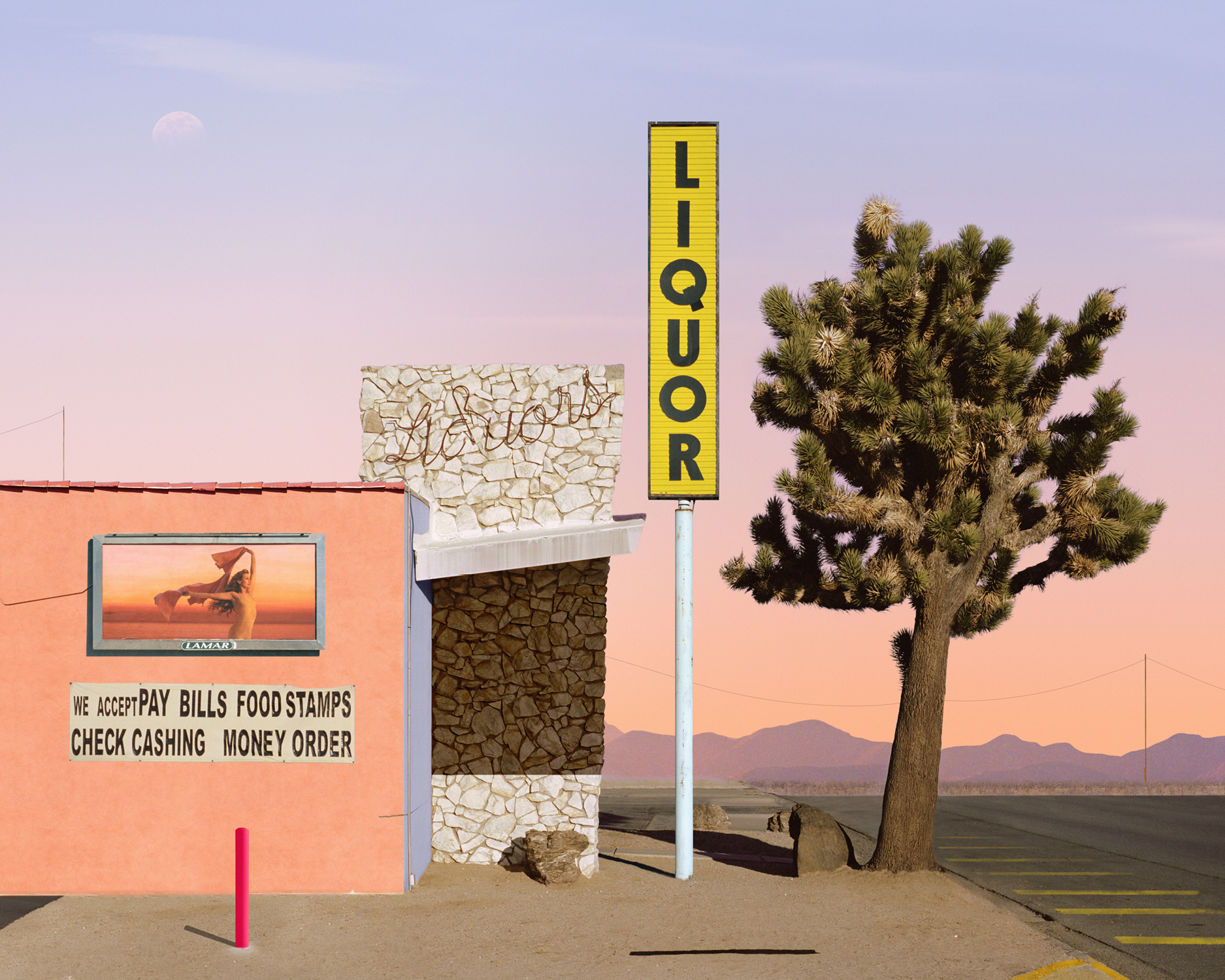
Byrne’s relationship with colour is equally instinctual. “If I’m photographing something, it’s because it’s moved me in some way, and colour is part of that… I’m really just trying to translate that feeling — to pass on whatever resonance or emotion I felt in that moment, as faithfully as I can.” Indeed, though his imagery is deeply personal, Byrne never seeks to dictate meaning. “I don’t go into a piece thinking, ‘I want the viewer to feel this exact emotion.’ What I aim for is to create a space — a tonal world — where a viewer might pause, breathe, and project something of their own onto it.”
Over time, his themes have shifted from purely aesthetic compositions to something more layered. “Especially after going through things like the pandemic, becoming a father, losing loved ones, the work started carrying more emotional weight. There’s still quietness and stillness, but also a kind of melancholy, or searching. I think the older I get, the more I’m interested in mystery.”
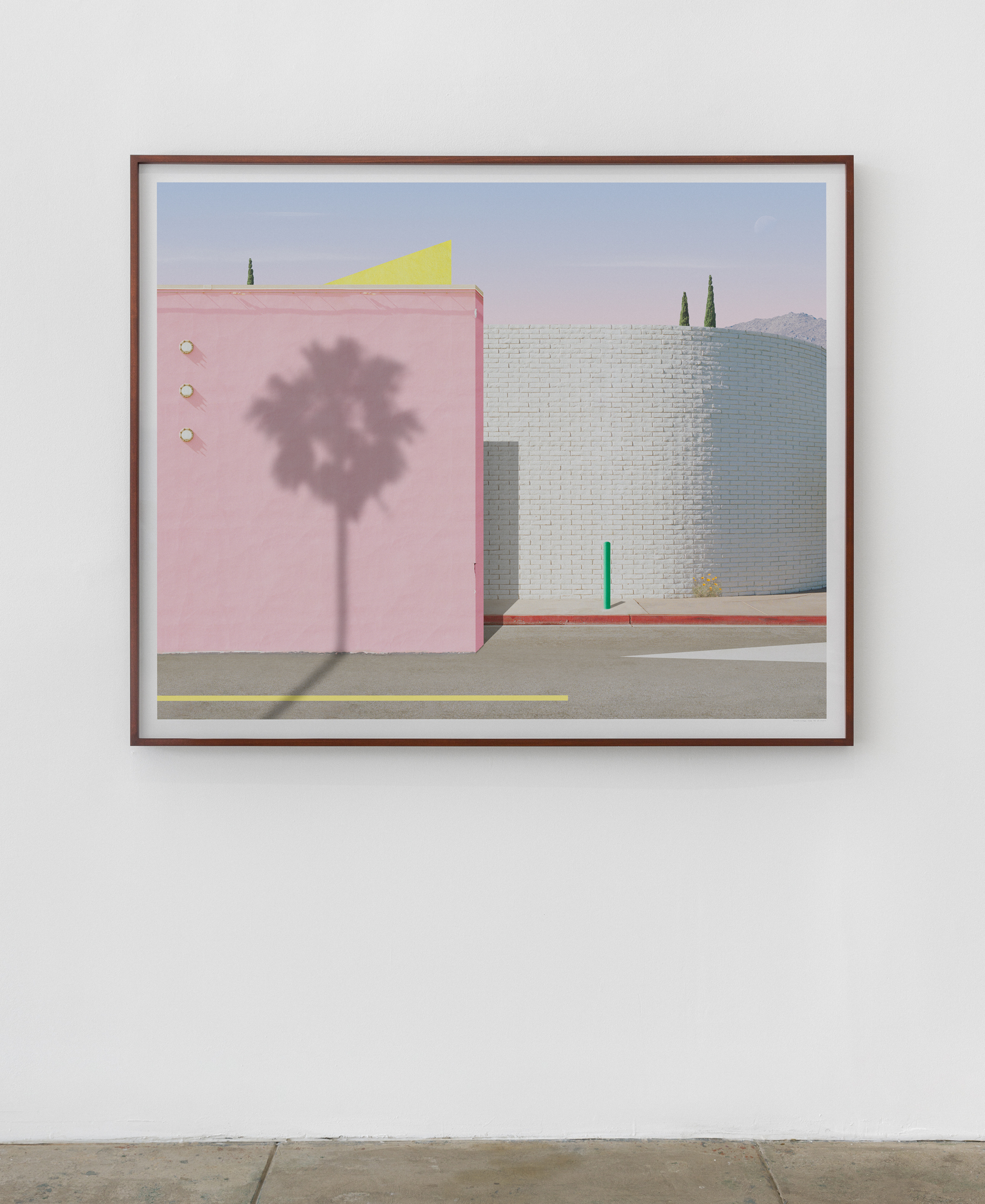
This begs the question whether, in a world saturated with visual content, Byrne struggles to stay inspired and maintain that sense of wonder. “If anything, I often feel stressed that I don’t have enough time in my life to do all the things I want to do!” he laughs. “But image saturation is real, and that can be overwhelming. I think each person has to figure out their own threshold, what’s inspiring, what’s numbing, and build a relationship with that.”
“…going through things like the pandemic, becoming a father, losing loved ones, the work started carrying more emotional weight…”
He recognises, and has experienced first-hand, the double-edged nature of digital platforms. “Social media gave me a critical platform early on, but it’s also a noisy, addictive time waste. It’s very sticky.” Likewise, on newer frontiers like AI, Byrne is pragmatic. “It’s fascinating… I think the artists who’ll thrive are the ones who know how to use it as a tool, not a crutch. You’ve got to have something to say, not just a clever way of saying it.”
When it comes to what Byrne hopes his own work communicates, it’s a reminder to take pause in the often chaotic world we live in. “A sense of stillness. Maybe a moment of seeing something ordinary in a new way. I hope it reminds people to look, to notice light, to feel things they can’t name. For me, it’s more about transmitting a state of mind — a kind of stillness, or reverie. If someone else feels that too, then it’s done its job.”
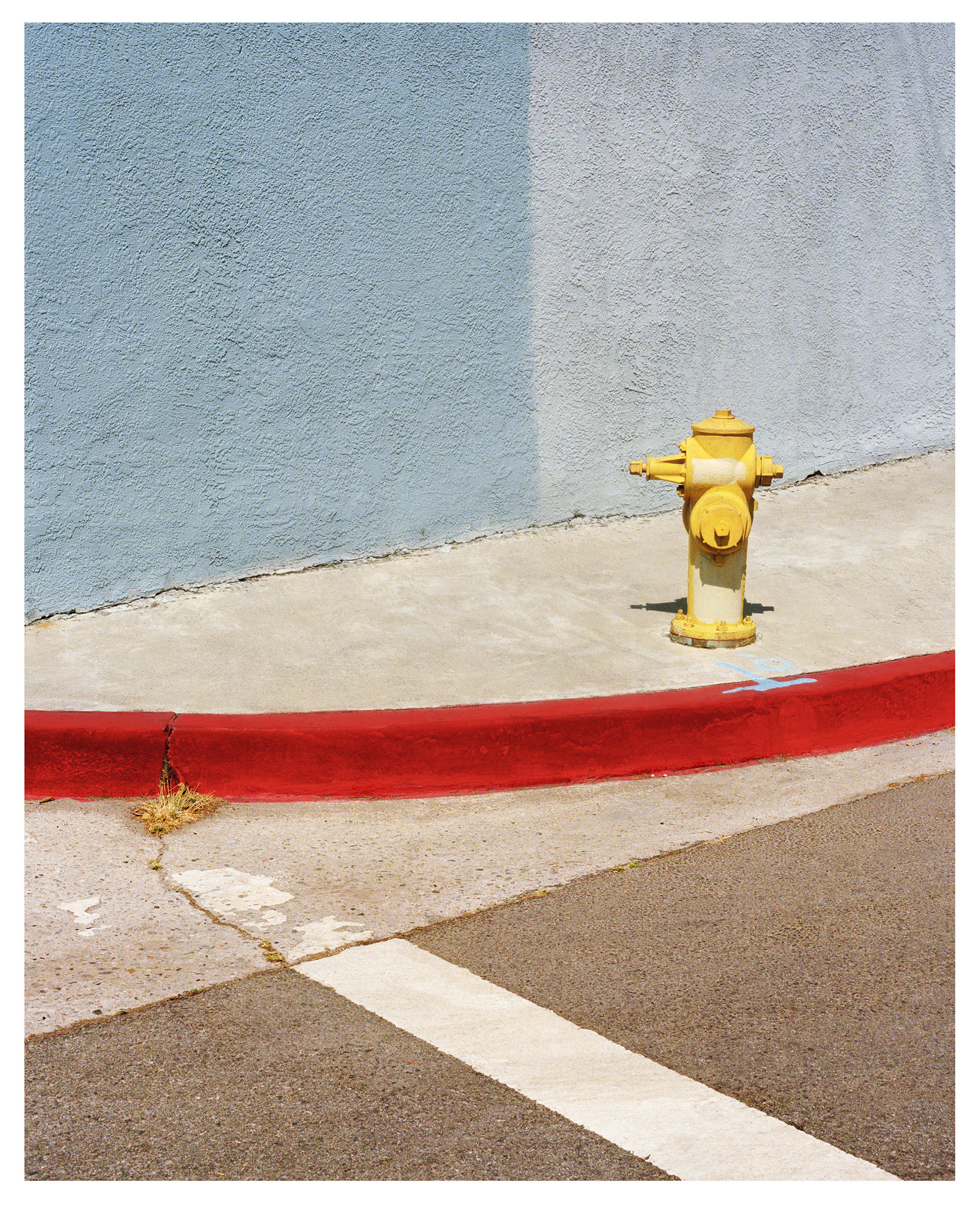
In return, his artistic practice has been a mirror for his own evolution. “Art has a way of revealing your inner architecture. I think it starts with me — with trying to express something I can’t quite put into words. I’ve also learnt I’m happiest when I’m deep in the process, when I’m chasing something I don’t fully understand.”
More recently, Byrne has returned to the practice of painting. “It’s energising, and has reminded me that reinvention is part of the process.” I can’t help but wonder whether recently becoming a father has inspired this shift back to a practice so deeply rooted in feeling, “[Fatherhood] has slowed me down in the best way. Made me more deliberate, more protective of my time. It’s also softened me, maybe cracked something open. There’s a whole new emotional range to draw from now, and a whole new level of chaos to navigate.”
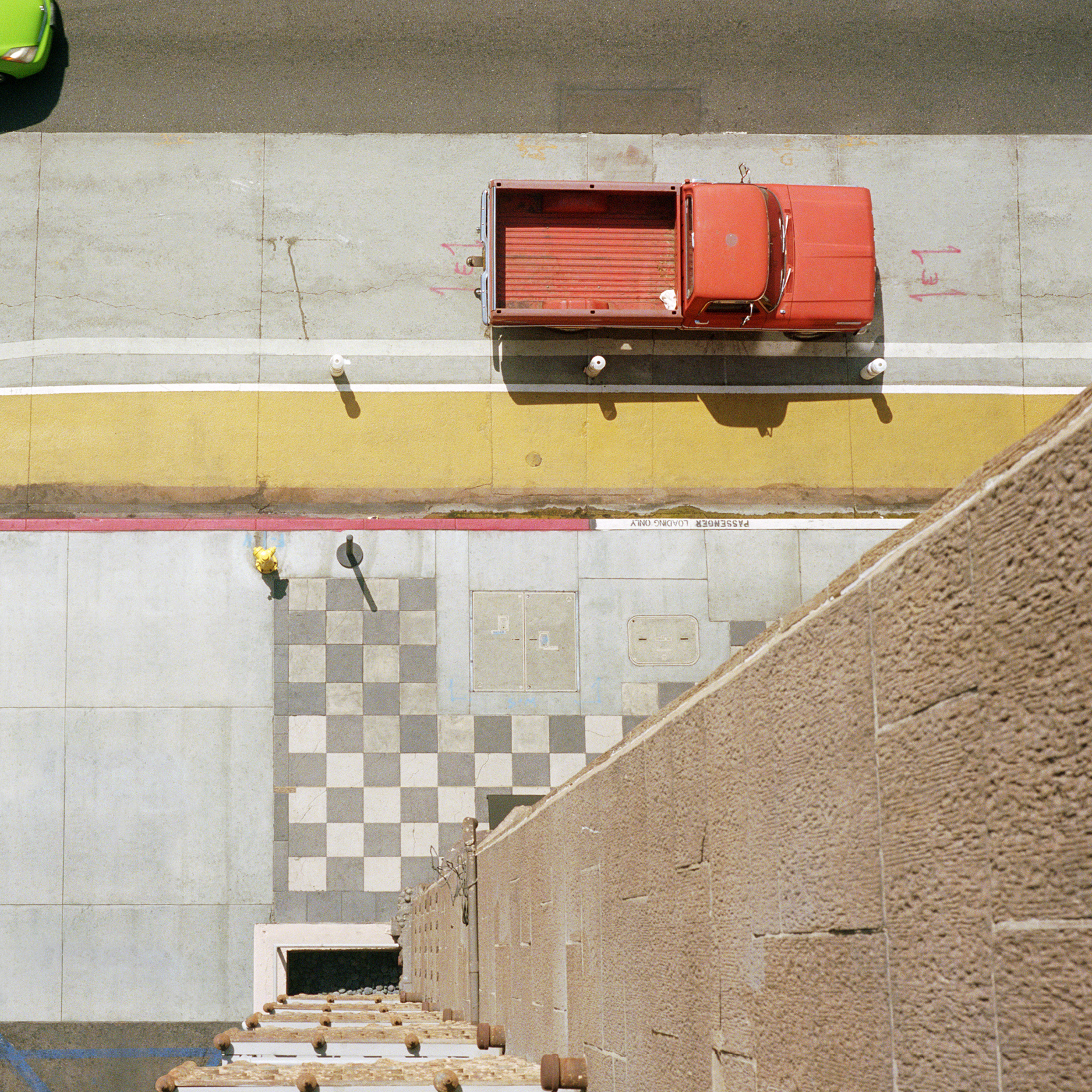
For Byrne, being an artist is, above all, a privilege. “Whether this ride lasts one more year or thirty, I’ll never take it for granted.” Asked who inspires him, in both work and life, Byrne’s answer speaks volumes of his character: Hockney and Matisse, musicians who have evolved over decades, and most importantly, his wife and daughter. “My daughter reminds me what pure happiness looks like daily, and my amazing wife (actress Rose McIver) — one of the most emotionally intelligent people I know — inspires me daily.”
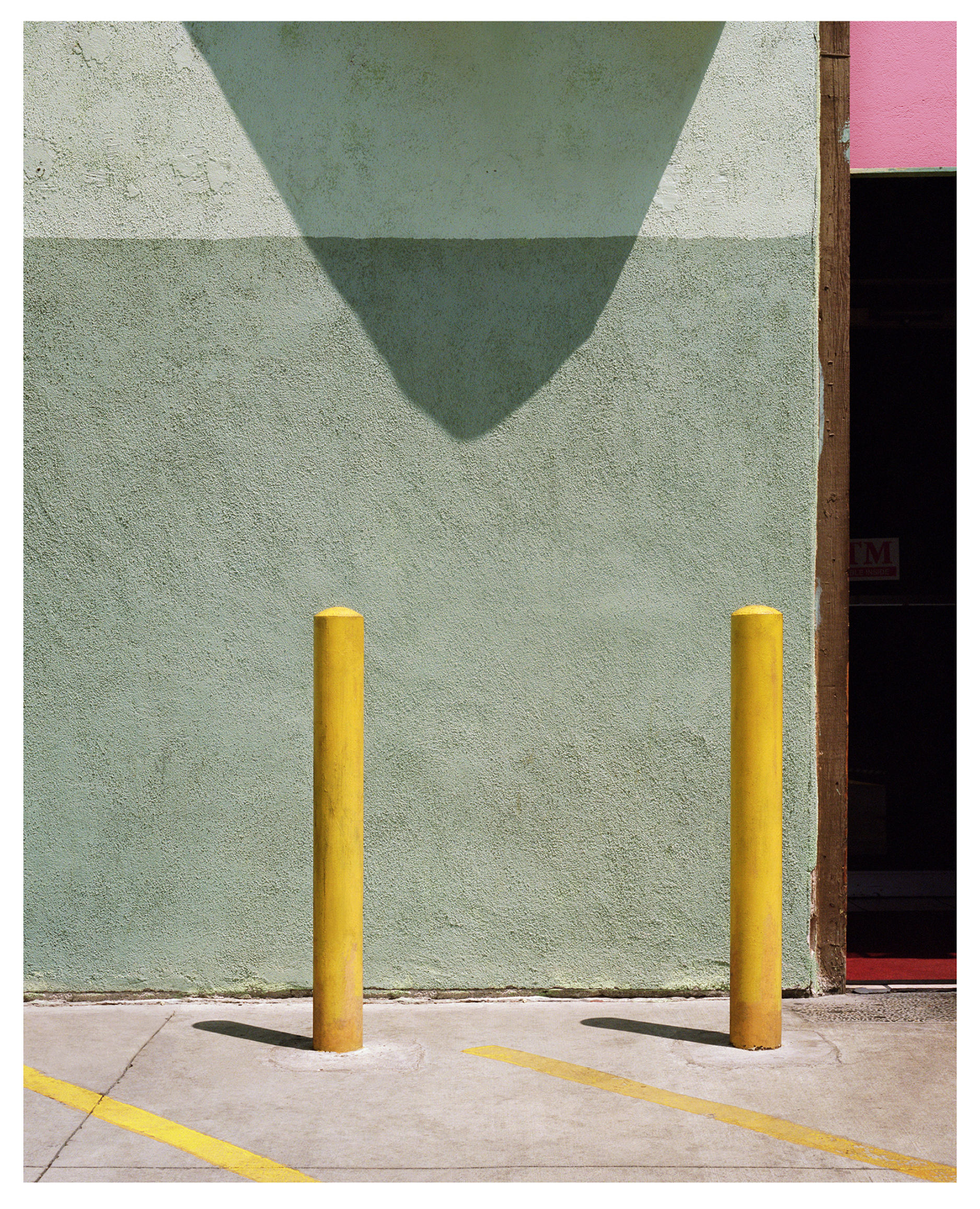
And as for what comes next, outside of enjoying watching his baby grow and savouring a slower pace, Byrne is in no rush to limit himself. “Painting is a big one… sculpture and installation interest me too. I’d love to create work that occupies physical space in a more immersive way.” Ultimately, Byrne’s future is not about perfecting a single vision, but about staying alive to evolution. “To keep evolving, to keep loving it, to build a body of work that feels like a real contribution — something people come back to.”
And it’s clear that no matter the medium through which Byrne communicates his inner world, he was always destined to be an artist who offers us not only a way to see, but a way to feel.

